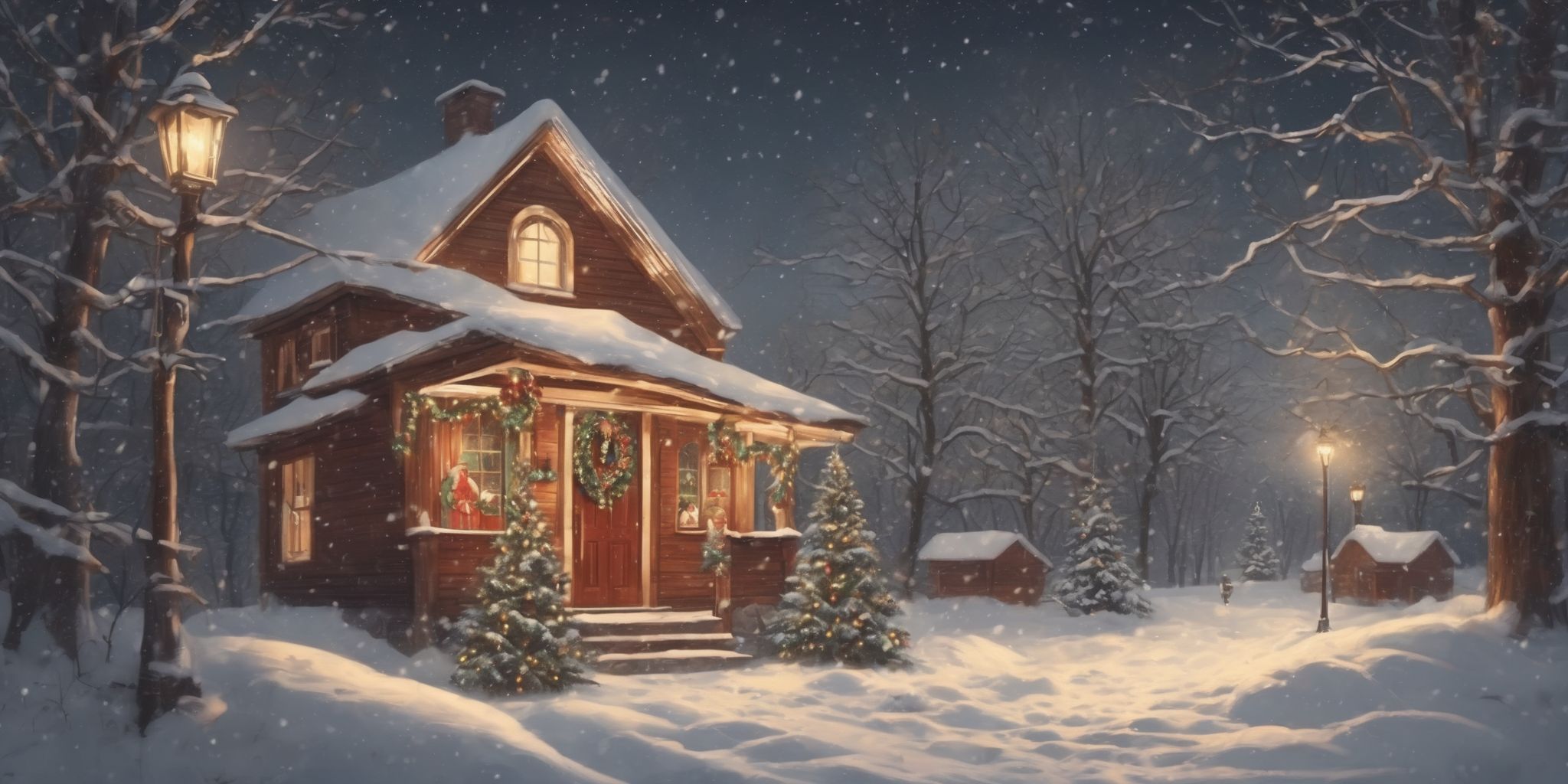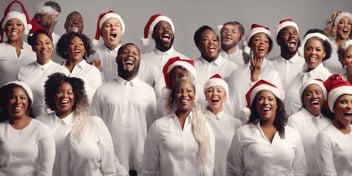- Blog
- Christmas song
- The Evolution of Christmas Carol Songs and Their Significance

It's that time of the year again when the air is filled with jolly melodies and the spirit of Christmas envelops us all. From Bing Crosby's silky voice in "White Christmas" to Mariah Carey hitting those high notes in "All I Want for Christmas Is You," it's undeniable that Christmas carol songs have become an indispensable part of the holiday season.
But have you ever wondered about the evolution of these festive tunes and the profound significance they hold? From their early origins to their role in shaping our Christmas traditions, join us on a melodic journey as we explore the captivating story of Christmas carol songs and their enduring impact on our lives.
Origins of Christmas Carol Songs
Early Christian Hymns
Early Christian hymns form the foundation of Christmas carol songs. These hymns were sung in religious gatherings to celebrate the birth of Jesus Christ. They served as a way to express devotion and spread the teachings of Christianity. The melodies were often simple and easy to remember, enabling widespread participation. These early hymns encapsulated the joyous spirit of Christmas and conveyed religious messages to the faithful.
Over time, they evolved and took on various regional influences, contributing to the rich diversity of Christmas carol songs we have today.
Medieval Carols
During the medieval period, Christmas carols emerged as a popular form of musical expression. These songs often incorporated both religious and secular themes, sung in the vernacular language for wider accessibility. Medieval carols were typically performed in community gatherings such as village feasts and church processions, fostering a sense of unity and celebration among the people. They were accompanied by simple musical instruments like drums and tambourines.
The lyrics and melodies of these carols were often passed down orally from generation to generation, allowing for variations and adaptations over time. The medieval carols laid the foundation for the evolution of Christmas carol songs into the diverse genres we know today.
Reformation and the English Carol Tradition
During the Reformation, the English Carol tradition emerged as a way to counteract the religious changes happening in Europe. Christmas song carols were used to preserve and celebrate religious beliefs, especially among Protestant communities. These carols combined familiar tunes with new, religious-themed lyrics to spread messages of faith and hope. This tradition allowed the English population to hold onto their religious identity during a time of significant religious and social change.
Today, many popular English Christmas carols, such as "Hark! The Herald Angels Sing" and "God Rest Ye Merry, Gentlemen," have their roots in this Reformation era.
Evolution of Christmas Carol Songs
Influence of Popular Music Genre
The influence of popular music genres on Christmas song carols has transformed the traditional melodies into contemporary hits. Artists have incorporated elements from various genres such as pop, rock, R&B, and country, giving these songs a modern twist. This evolution attracts new audiences and keeps the songs relevant year after year.
For example, upbeat pop arrangements of classic carols have gained popularity and become radio staples during the holiday season. The infusion of different musical styles adds diversity and freshness to the repertoire, ensuring that Christmas carols remain accessible and enjoyable for generations to come.
Adaptation into Different Languages and Cultures
Adapting Christmas carol songs into different languages and cultures allows for a universal celebration of the holiday. The translation of lyrics and melodies enables people from diverse backgrounds to connect with the joy and spirit of Christmas. For instance, many popular carols such as "Silent Night" and "Jingle Bells" have been translated into numerous languages, making them accessible worldwide.
This adaptation process not only preserves the original meaning and essence of the songs but also showcases the cultural richness and diversity of Christmas traditions across the globe. By embracing and adapting these carols, communities are able to share and celebrate the holiday in their own unique way.
Commercialization of Christmas Music
The commercialization of Christmas music has significantly influenced the evolution of Christmas song carols. With the rise of consumerism, holiday songs have become popular marketing tools for businesses. These songs are often used in advertisements, creating a festive atmosphere to promote products and services.
Additionally, the release of Christmas albums by popular artists attracts substantial commercial success. This trend not only generates revenue but also shapes the sound and style of modern Christmas carols. However, this commercialization can sometimes overshadow the true meaning and spirit of the holiday season. It is important to find a balance between commercial interests and the genuine emotional connection that Christmas carols can evoke.
Modern Artists' Interpretations
- Contemporary artists have transformed traditional Christmas carol songs, infusing them with new styles and arrangements to appeal to modern audiences.
- Many artists have released their own versions of classic carols, adding unique instrumentation, vocal techniques, or incorporating elements of different music genres.
- These reinterpretations breathe new life into familiar songs, attracting younger listeners and creating a fresh holiday sound.
- Artists such as [insert examples of popular artists] have put their own spin on Christmas carols, ranging from soulful renditions to upbeat pop-infused arrangements.
- These modern interpretations enhance the emotional connection to the songs, bridging the generation gap and ensuring the continued relevance and popularity of Christmas carol music.
Significance of Christmas Carol Songs
Expression of Religious Beliefs and Traditions
Christmas carol songs are a powerful means of expressing religious beliefs and traditions. They serve as a vehicle for believers to convey their faith and commemorate the birth of Jesus Christ. Through the lyrics and melodies, these songs communicate the theological significance of Christmas, such as the redemption and hope brought by the Savior.
For example, carols like "O Holy Night" and "Silent Night" eloquently portray the religious significance of Christmas. They create a sense of reverence and allow individuals to connect with their faith on a deeper level. These songs not only strengthen religious communities but also provide a medium for believers to share their beliefs with others.
Promoting Community and Togetherness
Christmas song carols have long been recognized for their ability to promote community and foster a sense of togetherness. As families and friends gather to sing these beloved tunes, bonds are strengthened, and a shared experience is created. Whether it's a neighborhood caroling event or a sing-along in a church, the act of participating in these songs brings people closer. The power of music in uniting individuals from diverse backgrounds is evident during festive celebrations worldwide.
Through the universal language of music, Christmas song carols transcend barriers and create a sense of belonging that is essential during the holiday season.
Preservation of Cultural Heritage
Preservation of Cultural Heritage: Christmas carol songs play a vital role in preserving cultural heritage. These songs carry traditions and customs passed down through generations, reflecting the unique cultural identity of different communities. They provide a valuable window into the history, values, and beliefs of a society. By keeping these songs alive and continuing to perform them, we ensure that the rich heritage of our ancestors remains intact.
For example, the adaptation of carols into different languages and cultural contexts allows for the celebration of Christmas in diverse communities while still honoring their own traditions. Through this preservation, we can maintain a sense of connection to our past and pass on these valuable traditions to future generations.
Over to you
This article explores the evolution of Christmas carol songs over time and highlights their significance. It delves into the origins of these songs and how they have changed and adapted throughout history. From traditional religious hymns to modern-day interpretations, the article discusses the various influences that have shaped Christmas carol music. It also emphasizes the importance of these songs in spreading cheer, fostering community, and preserving holiday traditions.
Read On

Exploring the Origins and History of Christmas Songs
Christmas, 'tis the season of joy, merriment, and most importantly, the jingling melodies that fill...

The Evolution of Christmas Song Music: From Traditional to Modern
'Tis the season to be jolly, as the melodious sound of Christmas music fills the air. From the...

A Global Celebration: Christmas Songs in Different Languages from Around the World
What do Mariah Carey’s "All I Want for Christmas Is You," Wham!'s "Last Christmas," and José...